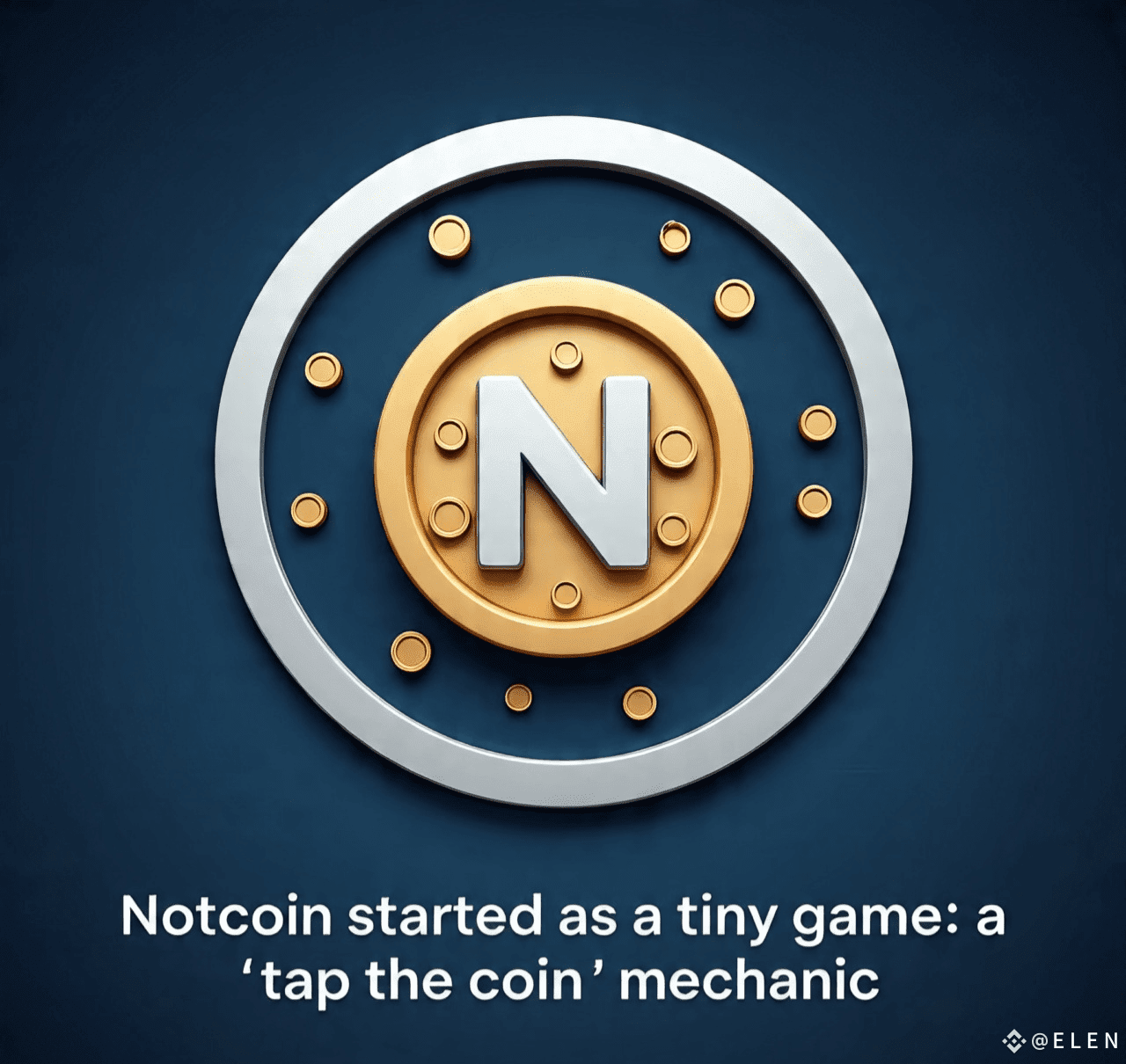
Inside a Telegram bot where people repeatedly tapped a virtual coin to earn “Notcoins.” The idea was absurdly simple and absurdly effective at driving viral growth millions of people joined because the barrier to entry was zero and the social loop was tight. Over time, the project introduced token minting and exchange listings so the in-game balance became tradable value.
2) How it grew so fast (and why that matters)
A few ingredients explain Notcoin’s virality:
Ultra-low friction it lived inside Telegram, so no installs or wallets were needed to start clicking. That massively lowered onboarding cost.
Social mechanics Telegram groups, referral loops, and contests made it easy to reshare and recruit.
Speculation and tradability once exchanges listed NOT and markets gave it a price, casual clicking turned into a tiny trading economy. That converts play into financial incentives and creates network effects quickly.
Those same mechanics are double-edged: fast growth exposes token economics and security issues much earlier than a slow, developer-first rollout.
3) Token basics and market footprint (the important numbers)
Public market trackers show NOT is an actively traded token with a very large supply and substantial circulating volumes. For example, CoinMarketCap lists NOT’s circulating supply and market cap and reports daily trading volume that makes it visible on the broader token list. Exchanges and token pages (KuCoin, Bitget, MEXC, etc.) maintain tokenomics pages that summarize allocations, supply caps, and distribution notes. If you plan to trade or hold, verify the contract addresses and the live supply numbers on a block explorer and the exchange listing page.
4) What the team has said (and recent shifts)
Leads on Notcoin have been unusually candid: after a wave of tap-to-earn projects showed that pure clicking economies weren’t sustainable, project co-founders publicly acknowledged that the tap-to-earn era was probably over and that the project needs to evolve into different game genres and utility models. That public pivot is notable because it points to real learning but also highlights how early economic design choices shape long-term viability.
5) Security incidents and scam risks a real cautionary tale
High virality attracts attackers. Notcoin has had at least one notable security incident: their official X (Twitter) account was compromised and used for malicious posts, and security researchers and alerts pointed to scam pages that impersonated Notcoin to drain wallets. There are documented scam sites and fake “spin reward” pages designed to trick users into connecting wallets and getting drained. Those incidents are reminders that large, distributed communities with financial incentives are prime targets for social-engineering attacks. Always verify official channels and never connect your wallet to untrusted pages.
6) Use cases: what Notcoin actually does well
Onboarding non-crypto users. Nothing matches the raw simplicity of opening Telegram and tapping a coin for five minutes; Notcoin proved you can move millions of people from zero crypto exposure to owning tokens.
Community-building and viral marketing experiments. If your goal is awareness or viral growth, Notcoin is a case study in low-cost virality.
What it doesn't reliably do: sustain long-term economic utility without additional product layers (games with durable retention, real utility, or defensible scarcity).
7) The economics why tap-to-earn is fragile
Tap-to-earn models typically depend on continual new user inflows or external capital to fund rewards. When inflows slow, rewards must drop, or token value collapses. That’s the core sustainability problem many “free-play-to-earn” titles encountered: attention is finite, and players rapidly churn unless the game offers deeper engagement or the token gains utility beyond speculation. The public statements from Notcoin’s team about shifting away from tap-to-earn reflect that core economic reality.
8) What users should do (practical safety and due diligence)
1. Verify official links follow the project’s canonical pages (site, official X, Telegram) and confirm posts through multiple channels.
2. Never connect wallets to suspicious sites scanning for “spin reward” or similar pages is an easy way attackers phish for approvals. If you see a promise of “free tokens” that requires a wallet connect, pause and verify.
3. Treat in-game balances as experimental until a token’s economic model and bridge to exchanges are stable, only allocate what you can afford to lose.
9) Where to verify official facts (quick links)
Notcoin official site and ecosystem pages.
Market pages (CoinMarketCap / CoinGecko) for live price, supply, and exchange listings.
Major writeups and interviews (Cointelegraph, KuCoin Learn) for context and team quotes.
Security advisories / scam reports (PCRisk, ForkLog) for recent hijacks or impersonation incidents.
10) Bottom line should you care?
Notcoin is neither a fluke nor a finished product. It’s a remarkable viral onboarding experiment with real market presence and serious lessons baked in: low friction brings users but also attackers and unsustainable economics unless product depth follows. If you’re watching Notcoin as a model for onboarding or viral growth, study both its success and its failures. If you’re thinking of engaging as a user, be cautious, verify sources, and don’t assume in-game balances equal stable wealth.


